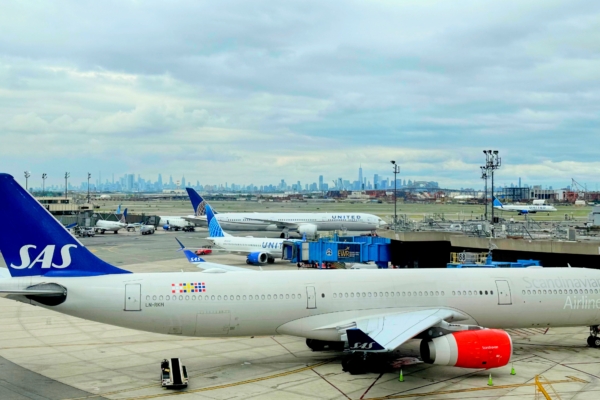Newark Liberty International Airport (EWR) in New Jersey continues to experience significant flight delays and cancellations this week, with some flights delayed for several hours. According to flight tracking website FlightAware, as of Monday afternoon, there have been 286 flight delays and 151 cancellations at the airport. The previous day saw 430 delays and 140 cancellations.
The Federal Aviation Administration (FAA) in the United States stated that the chaos in flight operations is primarily due to weather factors and staffing issues. Some arriving flights have been delayed up to 4 hours, while departures are experiencing an average delay of around 1 hour.
A report by Bloomberg on May 5 further revealed that last week, there was a situation in the Newark area’s air traffic control facilities where there was a 90-second period of inability to communicate with aircraft radar or radio. During this time, air traffic controllers were unable to “observe or communicate” with any air traffic. According to sources cited in the report, following this incident, several air traffic controllers were granted leave due to excessive psychological pressure, further impacting airport operations.
Prior to the release of this report, Senator Chuck Schumer of New York called for a comprehensive investigation by the Department of Transportation Inspector General on Monday to prevent the situation from worsening and potentially affecting other airports nationwide. He stated that describing the current situation at Newark Airport and the FAA as just “slight turbulence” is far from reflecting the severity of the actual issues at hand.
Schumer pointed out that the air traffic control system has long relied on outdated technology, still using equipment from the 1990s, and mentioned that warnings have been raised by relevant professionals, indicating challenges to flight safety.
In addition to the above incidents, one of the main runways at Newark Airport is currently undergoing maintenance work, expected to be restored by mid-June. The FAA also confirmed that their flight management equipment has experienced multiple malfunctions recently, causing disruptions to operations.
Both airport operators and airlines are under pressure. Passengers have reported experiencing delays on the tarmac or in the air for several hours, with some flights circling for extended periods before landing, indicating a bottleneck in air traffic control capacity.

